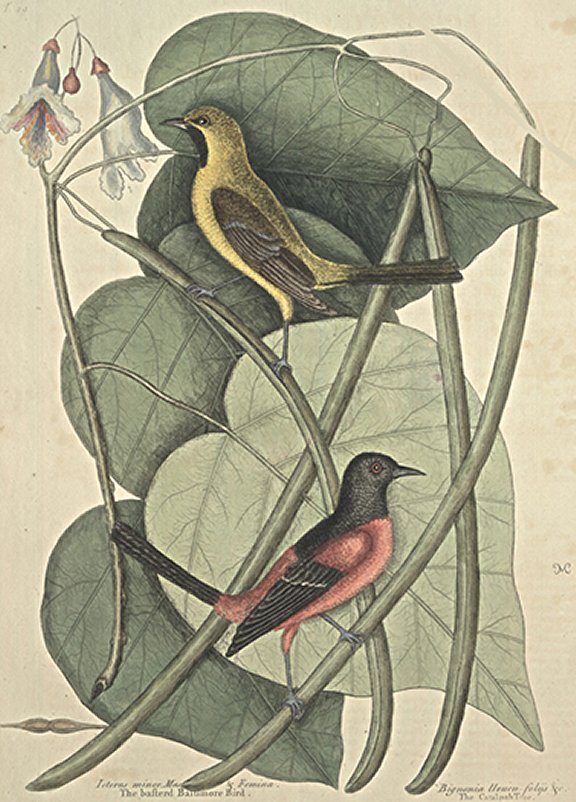Plate Number: I 49Icterus Minor: The Bastard Baltimore Weighs thirteen Penny Weight. The Bill is sharp-pointed; The Throat black; the Tail brown; as are its Wings, having most of the Feathers verged with White. All the rest of the Bird is yellow, the Breast being brighest. The Hen being as handsomly cloathed (tho' with very different colour'd Feathers) induc'd me to give the Figures of both. Her Head and Upper-part of the Back are of a shining Black; The Breast and Belly of a dirty Red; as is the lower Part of the Back and Rump. The Upper-part of the Wing is red; The lower part dusky black; The Tail black; The Legs and Feet blue in both Sexes. Bignonia Urucu foliis flore sordide albo, intus maculis purpureis &luteis asperso, siliqua longissima &angustissima: The Catalpa-TreeThis is usually a small Tree, seldom rising above 23 Foot in Height. The Bark smooth: The Wood soft and spongy; the Leaves shaped like those of the Lilax, but much larger, some being ten Inches over. In May it produces spreading Bunches of tubulous Flowers, like the common Fox-glove, white, only variegated with a few redish purple Spots and yellow Streaks on the Inside. The Cadix is of a Copper-Colour. These Flowers are succeeded by round Pods, about the thickness of ones Finger, fourteen Inches in Length; which, when ripe, opens and displays its Seeds, which are winged, and lie over each other like the Scales of Fish. This Tree was unknown the inhabited Parts of Carolina, till I brought the Seeds from the remoter Parts of the Country. And tho' the Inhabitants are little curious in Gardening, yet the uncommon Beauty of the Tree has induc'd them to propagate it; and 'tis become an Ornament to many of their Gardens, and probably will be the same to ours in England, it being as hardy as most of our American Plants; many of them now at Mr. Christopher Grays, at Fulham, having stood out several Winters, and produced plentifully their beautiful Flowers, without any Protection, except the first Year. |